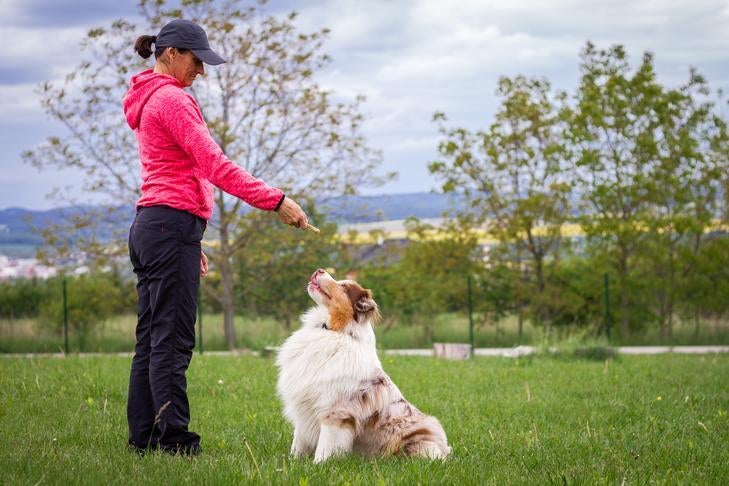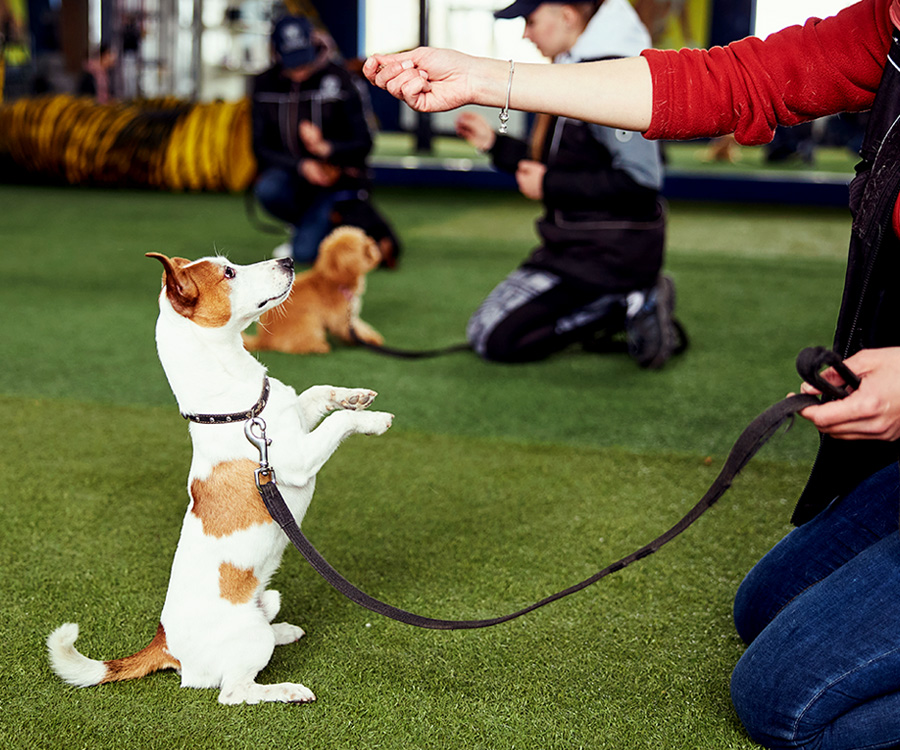How to Master Dog Training and Build a Stronger Bond with Your Pup
How to Master Dog Training and Build a Stronger Bond with Your Pup
Blog Article
Newbie's Overview to Successful Pet Training in the house
Effectively training a pet dog in the house requires a nuanced understanding of canine behavior and efficient communication strategies. Establishing clear training goals, using high-quality incentives, and maintaining consistency throughout relative are essential components. Furthermore, incorporating training into day-to-day regimens can improve both involvement and retention. Lots of novice trainers run into difficulties that may hinder progression. To navigate these intricacies successfully, it's important to discover a number of essential aspects that can change your method and lead to a harmonious connection with your pet dog. What basic principles should every beginner grasp to make certain success?
Recognizing Pet Actions
Understanding dog habits is crucial for efficient training and promoting an unified connection between human beings and their canine companions. Pet dogs interact largely via body language, articulations, and faces, making it crucial for proprietors to interpret these signals properly. Recognizing habits such as tail wagging, growling, or cowering can provide understandings right into a pet's mood and objectives.

Common behavior issues, such as hostility, anxiety, or extreme barking, often come from misunderstandings or unmet demands. Observing and dealing with these concerns without delay can protect against acceleration and make certain a positive training experience. By fostering a deep understanding of pet dog habits, proprietors can tailor their training approaches to suit their canine companions, eventually leading to a happy and mannerly animal.
Essential Training Tools
A fully equipped training area can dramatically improve the performance of dog training at home. Vital training devices ensure that both the pet and the instructor can take part in productive sessions that cultivate discovering and bonding.

Investing in a durable leash and a comfy, well-fitting collar or harness is vital for safety and control. These devices assist develop limits and guarantee the dog continues to be protected during training. Furthermore, a designated training location, devoid of distractions, aids focus for both the pet dog and the trainer.
Educating help such as training pads, cones, or agility equipment can likewise improve the experience by presenting variety and obstacles. Finally, having a note pad or electronic app for tracking progress can be invaluable, allowing you to keep in mind successes and areas for renovation. Using these vital devices will certainly develop a positive training environment and lay the foundation for reliable learning.
Producing an Educating Routine
Developing a constant training regimen is essential for effective canine training in the house. A well-structured regular not only helps in strengthening preferred actions yet also offers your dog with a complacency and predictability. To create an effective training routine, begin by identifying particular training goals, such as basic commands, chain walking, or house-training.
Pick an assigned time each day for training sessions, ideally when your pet dog is responsive and alert. Sessions ought to be short, about 5 to 15 mins, to keep emphasis and stop fatigue. Consistency in timing and atmosphere will enhance your dog's discovering experience.
Integrate training into everyday tasks to reinforce abilities. As an example, practice commands throughout walks or mealtime, which incorporates finding out right into all-natural routines. Additionally, continue to be adaptable and readjust the routine as required, suiting your pet dog's power degrees and state of mind.
Positive Reinforcement Strategies
Favorable reinforcement techniques are basic to efficient pet dog training, promoting desired actions with rewards as opposed to penalty. This technique utilizes Get More Information favorable stimulations, such as deals with, praise, or play, to encourage dogs to repeat details actions. The cornerstone of this strategy is timing; rewards should be provided instantly following the preferred habits to create a clear association.
When carrying out positive reinforcement, it is important to pick incentives that are motivating for your pet. High-value deals with, such as small items of hen or cheese, can be specifically efficient throughout training sessions. In addition, varying the benefits can keep your dog's interest and excitement.
Start with basic commands, like "rest" or "stay," and progressively progress to a lot more intricate jobs. Consistency is key; make sure that all relative make use of the exact same commands and incentive systems to avoid confusion.
Furthermore, it is essential to remain individual and stay clear of disappointment. Canines, like people, find out at their own speed. By fostering an encouraging training environment with favorable support, you can improve your dog's understanding experience while reinforcing the bond between you and your hairy friend, preparing for successful training outcomes.
Typical Training Challenges
While training a pet in the house can be a satisfying experience, it often comes with a set of typical difficulties that can examine both patience and consistency. One prevalent issue is disturbance. Canines may end up being quickly averted by sounds, activities, or also aromas in their setting, making it tough to preserve their emphasis throughout training sessions.
An additional difficulty is incongruity in commands and support. It can prevent and confuse the pet progression if family members use different signs or benefits. basics Developing a unified method is vital for efficient communication.
In addition, canines can experience disappointment or stress, especially if they do not comprehend what is expected of them. This can lead to unwanted habits, such as barking or chewing.
Lastly, the timing of reinforcement is crucial (Dog training). Postponed rewards can decrease the effectiveness of favorable reinforcement, as pet dogs might fail to link the habits with the benefit
Conquering these difficulties requires commitment, clear interaction, and a structured training strategy. Acknowledging and attending to these usual obstacles will certainly lead the way for a much more pleasurable and effective training experience in the house.
Verdict
Finally, successful pet dog training at home necessitates a comprehensive understanding of canine actions and effective interaction strategies. By establishing clear training objectives and utilizing high-quality treats along with favorable reinforcement, the training procedure becomes a lot more rewarding for both the dog and the fitness instructor. Persistence, adaptability, and consistency are necessary parts that help with discovering. Inevitably, integrating training right into day-to-day regimens boosts the bond in between canine and proprietor, making the experience both delightful and effective.
Establishing a consistent training regimen is important for effective dog training at home.Favorable support strategies are fundamental to Homepage reliable pet training, advertising desired actions via benefits instead than punishment (Dog training). By fostering a supportive training atmosphere through positive reinforcement, you can enhance your pet's understanding experience while enhancing the bond between you and your furry companion, laying the foundation for successful training outcomes
In conclusion, effective pet dog training at home necessitates a comprehensive understanding of canine actions and efficient interaction strategies. By establishing clear training goals and using premium treats along with positive reinforcement, the training procedure ends up being more fulfilling for both the canine and the instructor.
Report this page